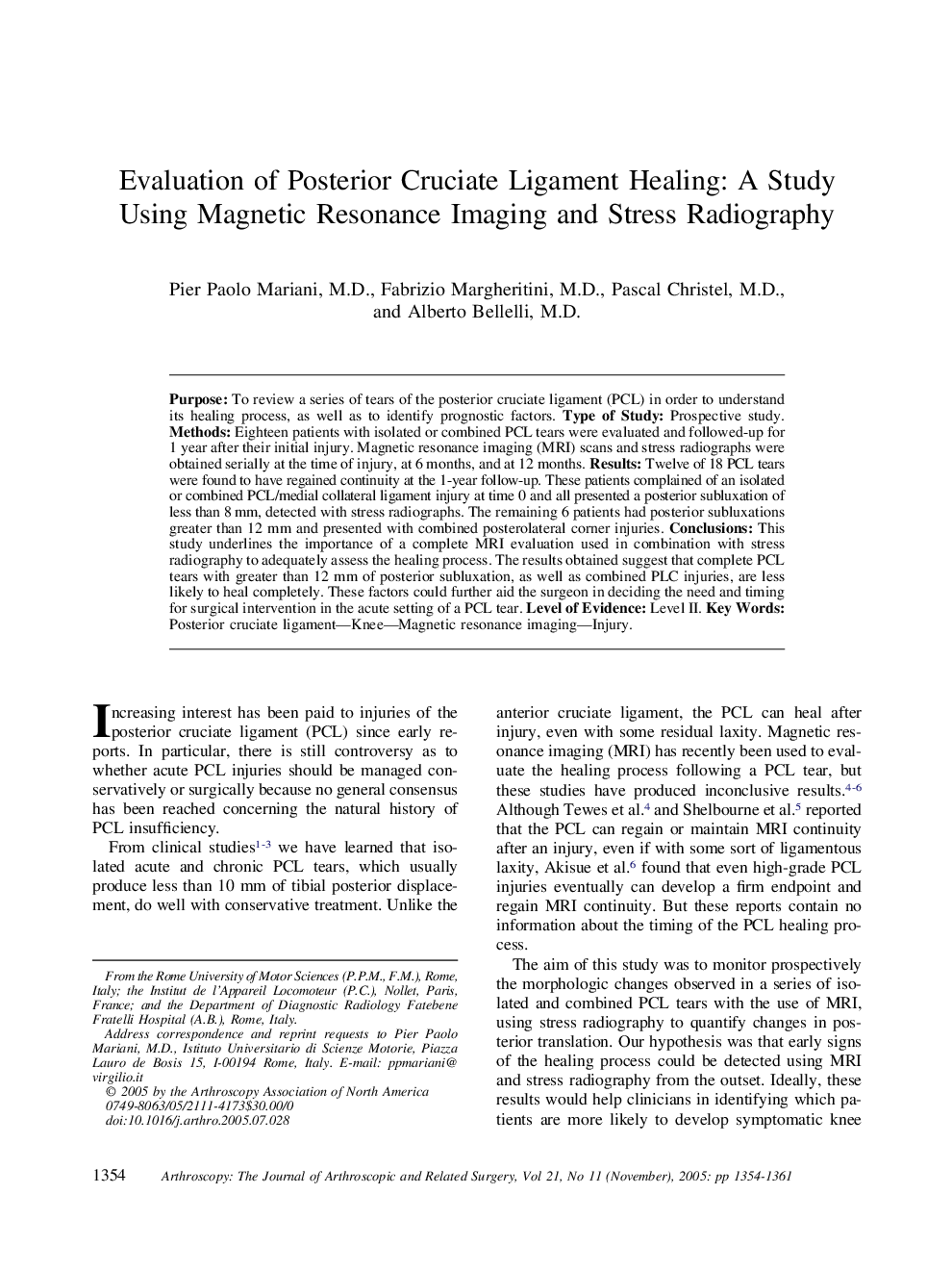| Article ID | Journal | Published Year | Pages | File Type |
|---|---|---|---|---|
| 10078777 | Arthroscopy: The Journal of Arthroscopic & Related Surgery | 2005 | 8 Pages |
Abstract
Purpose: To review a series of tears of the posterior cruciate ligament (PCL) in order to understand its healing process, as well as to identify prognostic factors. Type of Study: Prospective study. Methods: Eighteen patients with isolated or combined PCL tears were evaluated and followed-up for 1 year after their initial injury. Magnetic resonance imaging (MRI) scans and stress radiographs were obtained serially at the time of injury, at 6 months, and at 12 months. Results: Twelve of 18 PCL tears were found to have regained continuity at the 1-year follow-up. These patients complained of an isolated or combined PCL/medial collateral ligament injury at time 0 and all presented a posterior subluxation of less than 8 mm, detected with stress radiographs. The remaining 6 patients had posterior subluxations greater than 12 mm and presented with combined posterolateral corner injuries. Conclusions: This study underlines the importance of a complete MRI evaluation used in combination with stress radiography to adequately assess the healing process. The results obtained suggest that complete PCL tears with greater than 12 mm of posterior subluxation, as well as combined PLC injuries, are less likely to heal completely. These factors could further aid the surgeon in deciding the need and timing for surgical intervention in the acute setting of a PCL tear. Level of Evidence: Level II.
Related Topics
Health Sciences
Medicine and Dentistry
Orthopedics, Sports Medicine and Rehabilitation
Authors
Pier Paolo M.D., Fabrizio M.D., Pascal M.D., Alberto M.D.,
